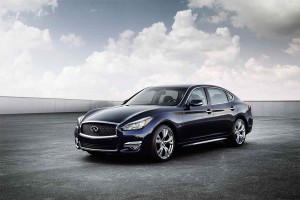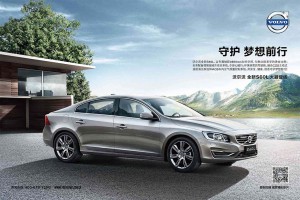In today’s hotly competitive luxury car market, manufacturers like Infiniti have learned they sometimes need to stretch a little to satisfy potential customers.
The high-line arm of Nissan Motor Co. is adding a long-wheelbase version of its Q70 sedan for the 2015 model-year, joining a growing list of makers that have introduced stretched versions of such models as the Jaguar XJ and Audi 8L.
The idea might seem particularly well-suited for the U.S. market, where the mantra has long been “bigger is better.” Ironically, the trend is being driven these days by China, where BMW has even introduced a long-wheelbase version of its compact 3-Series line.
Infiniti will offer the extended-length Q70L for just $1,500 more than the standard model, and analyst David Sullivan, of AutoPacific, Inc., says that “For relatively little extra money, you get a lot more rear space.”
(Infiniti prepping new flagship concept vehicle for Paris Motor Show preview. Click Here to find out more.)
The wheelbase of the new version is stretched a full 5.9 inches, and it’s all for rear seat legroom, Infiniti declaring the Q70L is “designed for buyers looking for the cabin space of a sport-utility in a luxury sedan.”
Until now, manufacturers have stretched only their biggest models for the U.S. market, such as the Audi A8L, the L version of the BMW 7-Series and the Jaguar XJL. There’s even a longer version of the flagship Range Rover SUV.
The launch of the long Infiniti Q70 could signal that this trend will move to the mid-luxury market. Indeed, Volvo is “very likely” to begin offering a stretched version of its S60 sedan sometimes next year, CEO Hakan Samuelsson telling TheDetroitBureau.com that would mean importing the car from China, the only place it is currently being built.
(Volvo S60L could become first Chinese car ever exported to U.S. Click Here for the latest.)
That would make it affordable to add the variant to Volvo’s line-up. And the fact that there are so many other stretch models in China means we could see still more come to the U.S. in the years ahead, industry analysts suggest.
“Everybody is going to look at (the Infiniti Q70L) and the Volvo, and I expect more” to follow, said analyst Sullivan. But he says it may be a case of manufacturers looking to create a market, rather than seeking to fill one that’s already there. “In this country,” he notes, “people who want more room normally will go to SUVs and crossovers.”
(Nissan, Infiniti planning to debut new autonomous vehicle technologies starting in 2016. Click Here to find out more.)
There are a surprising number of similarities between the U.S. and Chinese car markets, but here’s one situation where they’re quite different. In China, affluent buyers quite often employ chauffeurs and ride in the back seat, a rarity in the States, even among the most upscale of motorists. As a result, Chinese drivers typically require more space in back, along with plenty of creature comforts, such as backseat controls for entertainment and climate control systems.
With automakers adopting global product development strategies, that has paid off with more rear seat features on U.S. products, as well.
Now, the industry will get a chance to see if more Americans will start asking for the extra legroom, as well.


